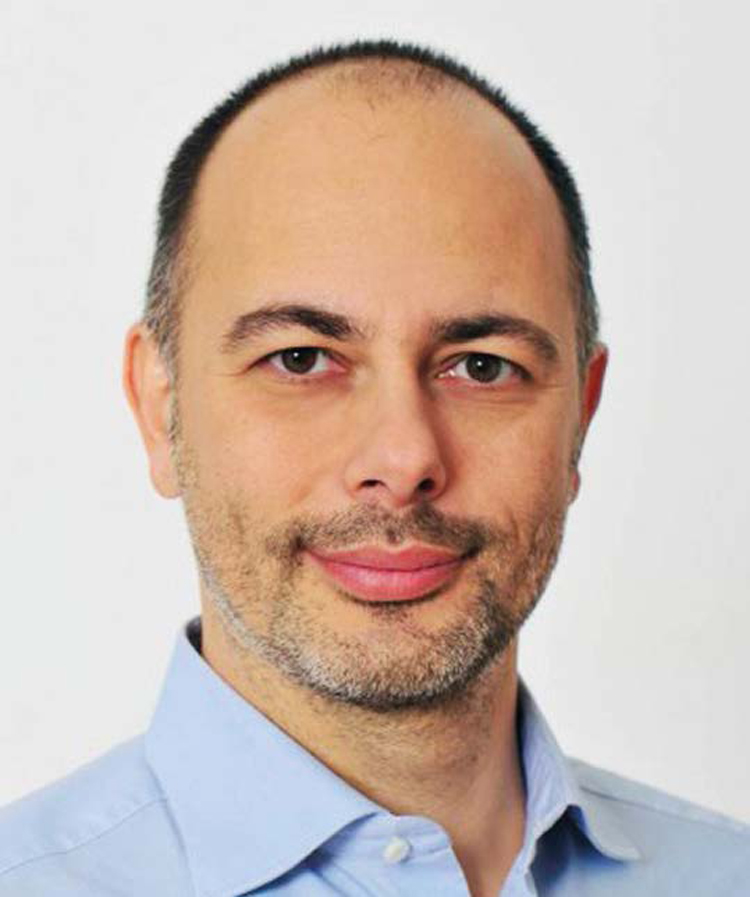Hands up those who are surprised to know that Italians’ confidence in the banking system has reached a historical low, which collapsed from 30% in 2005 to 10% at the end of 2015. A negative record which, according to last year’s survey conducted in December by Demopolis, banks only share with political parties, appreciated by only 4% of Italians.
It is slightly more unexpected, though, that, at a time when economic recovery is happening at a very low rate, retail credit is growing exponentially. These are the results shown by “The Observatory on retail credit”, by Assofin (the association of the main bank and finance operators of consumer and real estate credit), CRIF and Prometeia: in the first quarter of 2016, the family credit market (including house mortgages and credit by car dealers for the purchase of cars and motorbykes) soared by 20.3%. In particular, personal loans increased by 18.4%, representing the highest fraction of the credit market.
In the gap between the collapse of banks’ reputation on the one hand and the growing demand for consumer credit on the other, Italy could benefit from opportunities for social lending, i.e. loans amongst people, also known as peer-to-peer or P2P lending, lend-to-save crowd-lending and credit crowdfunding. Who knows if the post-Brexit turbolence will contribute to lower even more investments’ attractiveness in traditional bank circuits.
Completely computerized and managed by platforms on the Web, social lending is a promising sector of the sharing economy born in Anglosaxon countries with the intent of creating an online meeting point for those who need a personal loan and those private lenders looking for transparent and more luring investment yield opportunities compared to bank savings account, long-term treasury bonds and ordinary bonds. The relation between borrower and lender is regulated online only, thus eliminating the mediation of banks, with all the costs involved. These two are distinctive features of social lending.
And while Italy is still wet behind the ears with its Prestiamoci platforms (started in 2009) and Smartika (active since 2011), in the USA, the United Kingdom, Germany, Sweden, France and Spain, save-to-lend is already a well-established practice. Just think of the first four active platforms in the USA and the United Kingdom – Lending Club, Prosper, Zopa and Rateseller – started between 2005 and 2010 – in 2015 they had already supplied over twelve billion and a half euro in loans (to be precise €12,665,089,822, see box). So much so that in 2014, Lending Club was listed on the Stock Market, exceeding by over 60% the placement price, which allowed the company to collect $870 million with a capitalized value of $9 billion.
The Hit Parade of Social Lending
Ranking first in a virtual world hit parade of social lending is Lendin Club, created in the USA in 2007. From the beginning it has already granted over €8 billion (8,338,250,590 to be precise).
In second position there is Prosper, launched the previous year, with over €2 billion worth of loans under its belt (2,108,529,374), then Zopa, the British social lending veteran, who in the space of ten years, from 2005 to 2015, exceeded €1 billion of loans (1,274,647,887).
Little under one billion (€943,661,971) there is another British company, Rasetter, started in 2010, while in France, Younited Credit/Pret d’Union, the only active platform, has granted €340 million. In Germany Auxmoney is top of the list (€260,712,850); in Sweden Trustbuddy (236,067,740). In Italy, Smartika (started as Zopa) in May 2016 reached 23 million, while Prestiamoci grants loans worth in the region of €3 million.
While with the financial resource collection, the US platform joined the traditional Stock Market, with regard to loans it is still sticking to the classic profile of credit crowfunding. Indeed, Lending Club targets those needing moderate loans, of less than $20,000, generally required for refinancing or consolidating debts, for home renovation, university and medical fees and purchases of important goods.
Let’s now turn back to Italy and see what lenders and borrowers of Smartika (the company with its €23 million of loans provided from its inauguration year to May 2016 covers 80% of the Italian peer-to-peer lending market) and Prestiamoci (that has reached €3 million). With a few preliminary remarks: even to access loans of such platforms it is necessary to pass a preliminary investigation of reliability for repayment.
Prestiamoci’s TAN (Nominal Annual Rate) fluctuates between 3.90 and 14.01% and the maximum amount of loans must not exceed €25,000, rattles off CEO Daniele Loro. “Mid-sized loans/investments are around €4,000, ranging from 2,000-2,500 to 40-50,000 (rarer). The gross yield, according to the risk category chosen by the investor, goes from 6.5 to 8%, with very little credit allocated with interest rates of 14.1%. Failure to pay it back, with a penalty of the yield of 1.5%, from average 6.80% goes down to 5.30.”
The maximum threshold established by Smartika is lower: €15,000. The TAN, according to the length of the repayment plan, varies between 2.85% for a conservative plan over 12 months, to 6.06% for a dynamic loan over 48 months. The yield-risk category is still chosen by the investor.
Moreover, it must be said that both platforms distribute the investments to more than one lender to spread out the risk of failure to repay the loan.
Just because it represents an alternative to conventional financial markets does not necessarily mean that social lending is concessive: the percentage of rejected loan applications is 97-98% for Prestiamoci and 92% for Smartika, as a guarantee of investors’ savings. As for insolvencies, now that we are no longer penalized as new entrants, “today we are better placed on the market,” replies Loro on behalf of Prestiamoci. “The 90+ indicator, i.e. the percentage of loans with over 90 days in arrears amounted to 1.3% in May, a lot less compared to competitors. So, those investing will have lower default rates compared to the market,” which is the result of a learning curve for them. In case of insolvencies, Prestiamoci entrusts a debt collection agency to reinstate the correct repayment plan. Failure to repay is then communicated to the Credit Bureaus used in the platform, with the possible risk of losing access to the Italian financial system.
Smartika uses a scoring model with a parametre of bad rate, i.e. a percentage of applicants who may be insolvent for three or four instalments after twelve months from the beginning of the loan. It then establishes an insolvency percentage on the total loans granted of 9.74%, “such rate identifies the estimated percentage of the amount of money wich will be collected through in-house staff or specialized outsourcers. In 2015, such activities led to a residual default rate of 2.5% of the total credits granted, compared to the average default in the banking sector on consumer loans of 6-7%.” Borrowers not honouring their repeyments are subject to the scrutiny of debt collection agencies, after which legal action is taken. During the credit recovery phase, lenders are always given the possibility to renegotiate debt in order to meet the needs of those experiencing unforeseen temporary difficulties, such as job loss or illness.
The average profile of the Italian investor is that “of a mature subject aware of the concept of diversification, volatility, with special consideration for innovation,” sums up Daniele Loro. “He found out about these innovative forms of investments by browsing the Web and intends to test them because he considers them more attractive than the traditional ones.” What are the most popular reasons fro the loans? “Home improvement, purchase of solar panel systems, furniture, car or even social motivation” Loro explains.
Similarly, Smartika lenders are experienced internauts, mostly men (93%), aged between 25 to 55. The prevalent motivation is fair-trade opportunities followed by yields offered. Applicants are mainly men (70%), one fourth of applications are for houses – furniture and renovation – (27%), followed by the purchase of cars, motorbykes, second-hand campervans, wedding expenses, university fees, repayment of loans granted by families. Medical treatment loans are on the rise (5% of loans granted) which in some regions reach 8%.
Enrica, a freelancer in the IT sector, has as many as four loans going. “I am very grateful to Smartika” she claims “because, despite not having a permanent work contract, they did not reject my applications like other lending institutions I had approached. They examined the documents, my term contract and my personal reliability and after only 10 days they paid into my account the €1500 I had applied for to pay off a debt I had with my condo fees.” With two more loans Enrica renovated her home, while the latest one will allow her to realize her dream to follow a master in web marketing.
Federico, a university researcher with a degree in political sciences and international relations, when asked what pushed him to become lender-investor of Smartika he replied with no hesitation: “The ethical nature of the investment: it is about borrowing and lending money between people, the direct relationship elimitates obscure the intermediate role of banks, the unpleasant surprises of commission fees, complex and financial products which are not transparent. Volatility is low and the yield more advantageous than those offered by banks: my €10,000 investment, at an interest rate of 6.80%, excluding a commission of 1% to Smartika, before tax, gave me back €800,” continues. “Every month they pay back a share of the lent capital and one of matured interests. It is possible to choose the destination of the loan-investment and yield class between conservative, balanced and dynamic: the higher the risk, the higher the yield. But from 2015, Smartika introduced a guarantee fund protecting lenders, even though the yield is slightly lower.”
Roberto, with a school-leaving qualification, contacted Prestiamoci. “I need liquidity and on the Web I came across peer-to-peer lending. I became interested and got in touch with Prestiamoci to have a loan of €6,000. After a standard preliminary investigation, after nearly ten days I got the money with more favourable conditions compared to conventional credit: the number of instalments being equal, my repayments are lower, which is a clear sign that interests are lower.”
Matteo works in a management consultancy company. When he found out about social lending through word of mouth, he wanted to find out more about ethical aspects and other issues online. “I chose Prestiamoci, an all Italian company, and I invested-lent €1,000, as automatic investment: as the shares matured, they were reinvested.” The interests – 5% before tax – collected were used to repay previous loans. “The good thing about a conventional investment,” says he, “is that you can keep track of your money and actively decide where to invest, feeling part of that project.”
So, alluring interest rates, transparency, speed, flexibility. But for Daniele Loro, the advantages of social lending do not end here. “For example, we don’t sell other products linked to loans as insurances passed off as protection for consumers, while in reality it is a hidden and wrong surcharge of the intrest rate, required as a conditio sine qua non for granting the loan.”
To build a bridge between social lending and the green economy, in May, Prestiamoci launched a new product born out of the joint-venture with Evolvere Spa, a leading operator in the sector of distributed energy with over 8,000 PV systems: “Prestailsole” is a sort of “Solar Presti-Bond”, exclusive to those lenders who will invest, with a fixed yield, their savings in fund Evolvere’s clients signing the “Tuo” contract to buy PV systems to be installed on the rooftop.
But how is the credit industry reacting to the challenge of social lending? By taking part in the round table that followed the presentation of the results of the above mentioned “Osservatorio Credito al Dettaglio” (Milan, 15th June 2016), Vincent Mouveroux, general co-director for Agos Ducato replied, “We are working to reinvent our business, to develop the ‘one-click’ efficiency, to improve the client’s knowledge and to take advantage of ‘a multi-channel system everywhere,’ i.e. permanent connection via smartphones, owned by two thirds of Italians, the highest percentage in Europe.”
However, Giorgio Orioli, Consel’s CEO (an institution linked to Banca Sella) thinks that peer-to-peer lending is no match: pensioners (obviously with little or no computer literacy) are 20 million in Italy, he said, while the millennials (digital natives) have no money to invest. “Consel too operates on line” commented Orioli. “Lenders make all the difference. And for those in need of a loan, the origin of the credit, whether lending institutions or individual lenders, makes no difference. The disruptive effect of the digital medium is about, if anything, the elimination of jobs: out of 300,000 employed in the Italian banking industry 100,000 jobs are reduntant”, concluded. Tommaso Gamaleri, Younited Credit’s CEO, the French platform of peer-to-peer lending which is about to “land” in Italy, acknowledges that €340 million of loans granted in four years in France represent only 0.5-0.7% of the whole French market. He does not see competition but rather complementarity between the two universes and despite confirming its devotion to the Web, he does not rule out “the possibility of an interaction amongst online activities and offline presence.”
Meanwhile, Europe has already launched a new challenge: credit crowdfunding to companies, the so called P2P business lending. According to a report by Moody’s in February 2015, in 2014, SMEs received over two thirds of the over two billion pounds of peer-to-peer loans granted in the United Kingdom, with more than €95 million in the rest of Europe (35 in Holland, 28 in Scandinavian countries, 14 in Spain, 11 in France and 7 in Germany).
If this will cause disruption, permanent marginality or online-offline complementarity, only time will tell.
Prestiamoci, www.prestiamoci.it
Smartika, www.smartika.it/it/index.html
 Interview with Luciano Manzo, Smartika CEO
Interview with Luciano Manzo, Smartika CEO
Edited by S. Z.
It all starts with a click
“One of the strenghts of Italian social lending? Growing scepticism of Italians towards traditional financial markets,” replies Luciano Manzo, Smartika CEO, which with a staff of twenty full-time employees dominates 80% of the Italian market. “People are looking for alternative forms of investments such as peer-to-peer lending, which is not to be considered as a replacement as such, but on the one hand it offers quick and transparent solutions during the preliminary investigation, previous to the loan, and on the other, a great investment opportunity with yields around 6.5%.”
Weaknesses?
“The usual ones typical of any innovation: little knowledge of the phenomenon. But the Italian market is like a diesel engine: it starts slowly, but then after a while, it picks up speed. The other aspect is the unfavourable tax situation because the interests are taxed with a marginal rate. But, hopefully, a bill being discussed is about to change all this.”
Are there specific aspects characterizing Smartika’s profile on the Italian panorama?
“Our competitive advantage lies in the operational aspect: it is Smartika that has to decide where to allocate funds entrusted to us, even though investors can choose the level of risk, and thus of the yield, amongst the three recommended.”
Your next objectives?
“Accomplish the process of enormeous technological innovation, with huge investments to improve, amongst other things, other analytics.”
 Interview with Michele Novelli, President of Prestiamoci
Interview with Michele Novelli, President of Prestiamoci
Edited by S. Z.
Unique and Transparent
According to Michele Novelli, President of Prestiamoci, the second Italian platform of social lending operating with a staff of ten people “P2P lending’s strenghts in Italy are: from a lender’s point of view, the fact that it represents a unique product; from a borrower’s perspective, the fact that everyone has his personal assessment of risk; for both there is a 100% transparent online approach. The strenghts of Prestiamoci: attention to clients, borrowers and lenders which are all part of the same family and therefore share the project.”
Weaknesses?
“In general, social lending in Italy suffers a delay in the process of digital maturity with regard to personal loans. But this problem will be solved, as testified by the success of online insurances and Amazon in e-commerce. The generational digital divide will have less and less importance. While a weakness for lenders is unfavourable taxation.”
How imporant is the social aspect in peer-to-peer lending?
“For us in Prestiamoci it is extremely important that people give and take money amongst them. In particular, lenders are motivated not only by yield but by the fact they are lending to other people; for borrowers, in all honesty, this aspect is less important.”
Do you intend to involve institutional investors or will you just operate with individual lenders?
“Institutional lenders are important for our growth. The discriminating point is that the platform is thought for individual lenders, so even institutional lenders must abide by the same modality of capital entrustment followed by private investors.”


